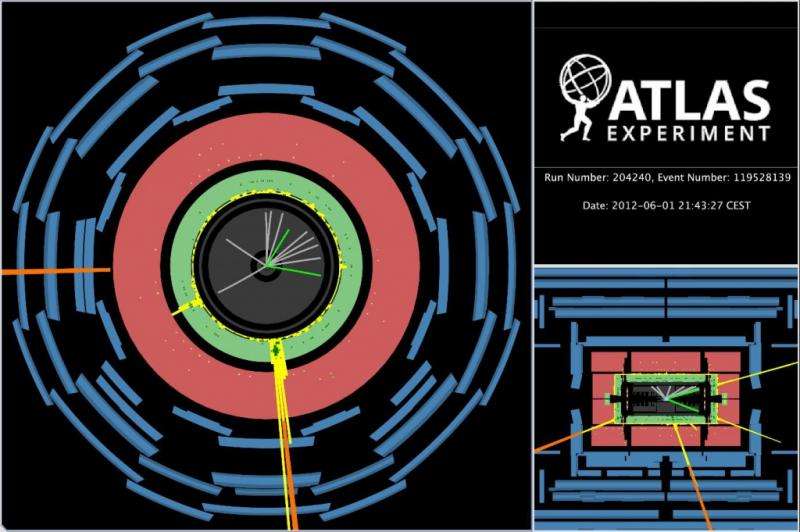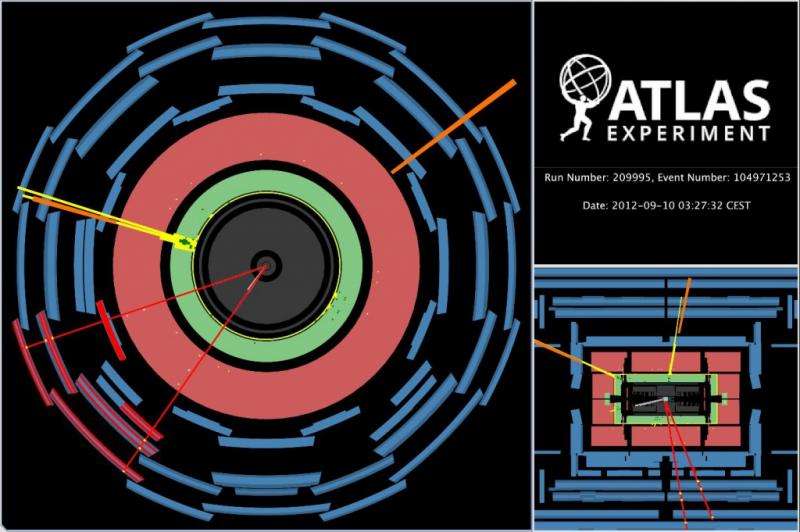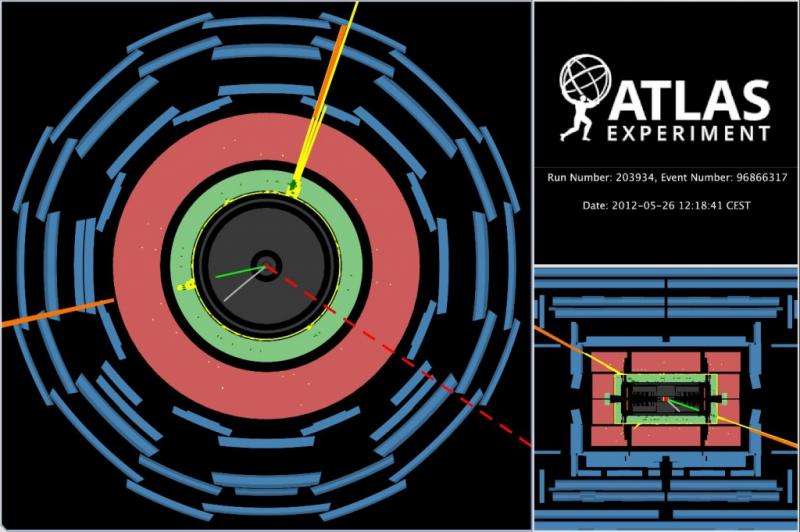Scientists observe Z-boson production with two associated photons

An international group of physicists has observed Z-boson production with two associated photons with later Z decay to electrons, muons or neutrinos at the ATLAS experiment at the Large Hadron Collider (LHC) in CERN.
Observation of this extremely rare physics process, predicted theoretically in 1960s, further validates the Standard Model (SM), according to ATLAS experiment contributor Dimitrii Krasnopevtsev.
"Such a rare process as the Z-boson production with two associated photons is an important test of the electro-weak sector of the Standard Model. Currently, our group has not found any deviations from theoretical predictions—in other words, we have once again confirmed Standard Model," he explained.
Scientists studied Z-boson production with one or two associated photons. It required precise measurements of the process along with kinematic parameters of registered particles.
"Precision improvements are important to test Standard Model predictions. In our study, we put limits on 'exotic' theories, which can contribute to the final state of Z production with photons."
So-called intermediate bosons W± and Z were discovered in CERN in 1983. W- and Z-bosons were produced in proton-antiproton collisions with energies of 540 GeV. All three of these particles are very short-lived, with a half-life of about 3×10−25 seconds and can be detected only by their decay products.

The Standard Model is a general theory describing interactions and particles. One of the most important tasks in modern high energy physics is the experimental test of its predictions. Currently, scientists have not found any deviations from this theory, but there are large uncertainties in some measurements and some processes are so rare that there are still possibilities to observe new phenomena.
Scientists from MEPhI added that triboson production studies (Z-boson with two photons) show that energy and integrated luminosity at the Large Hadron Collider enable the most precise measurements of SM with very rare processes.

Provided by National Research Nuclear University





















